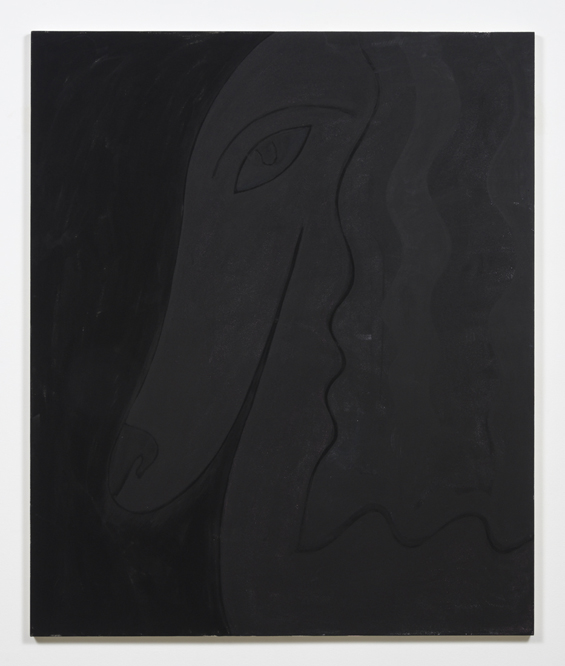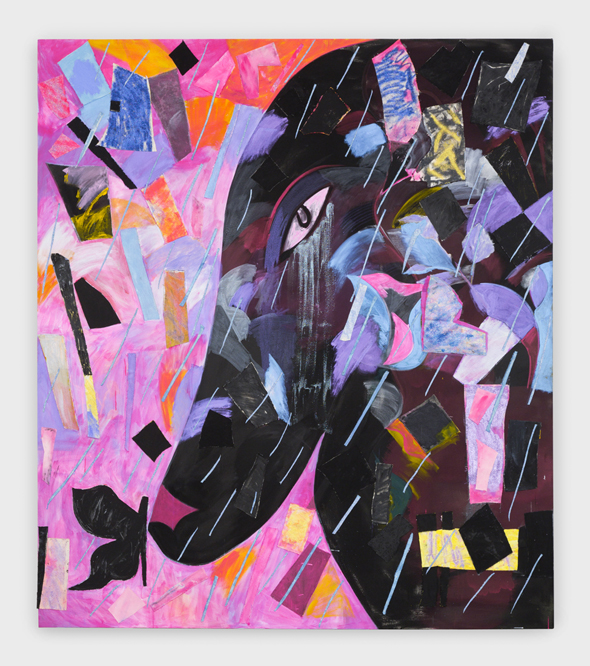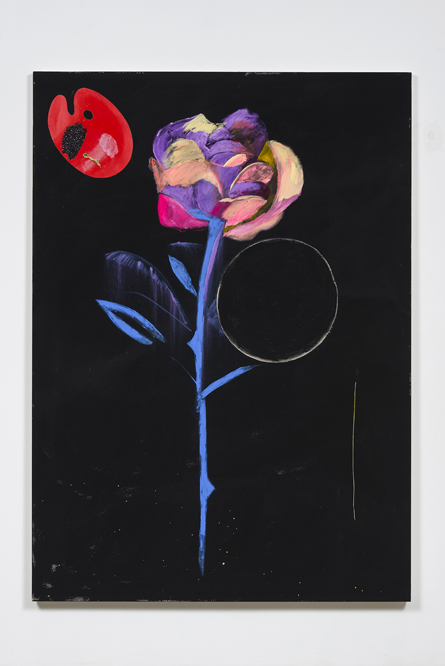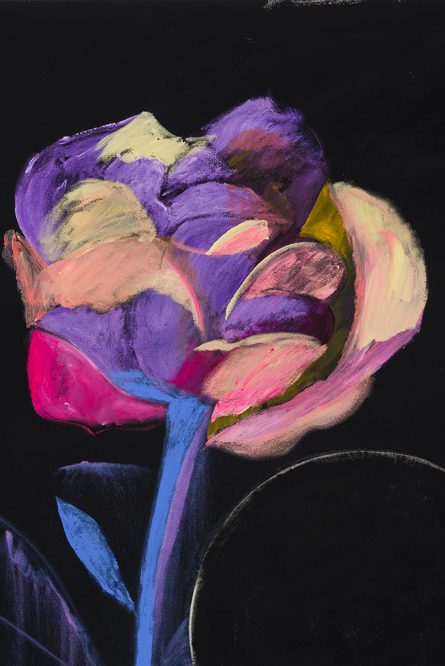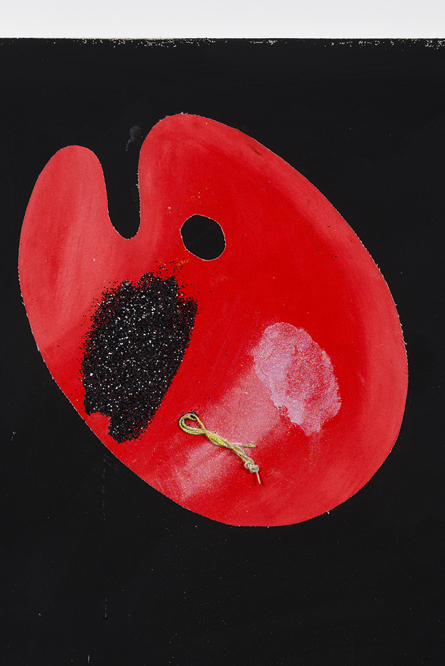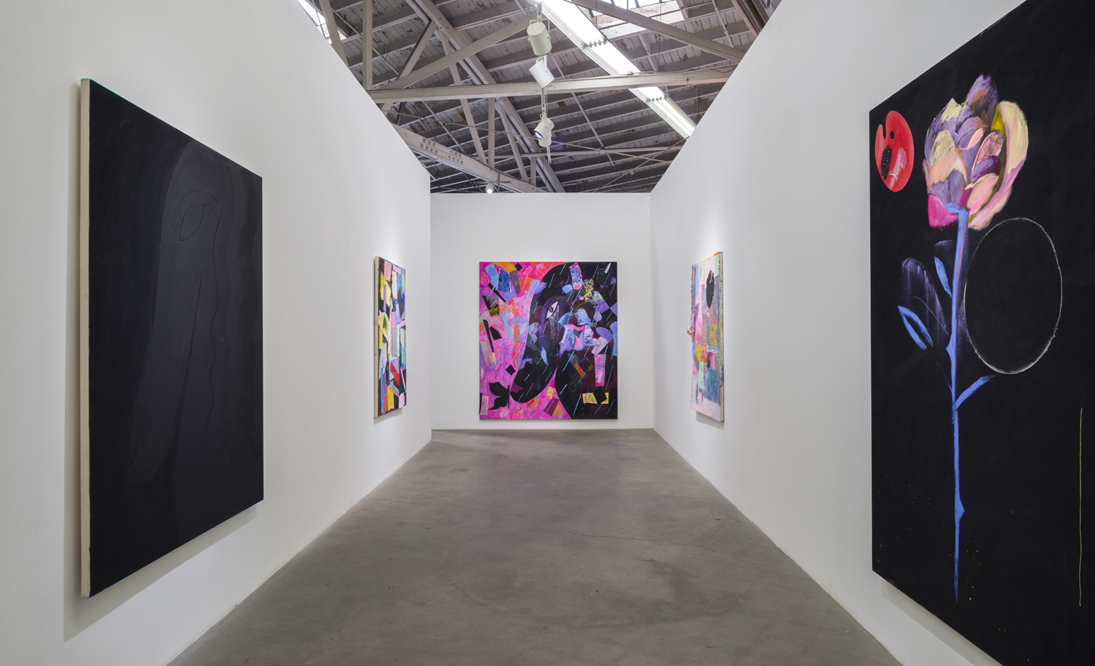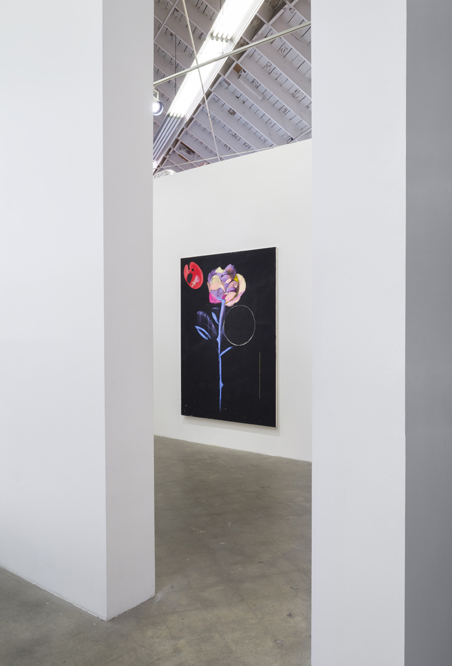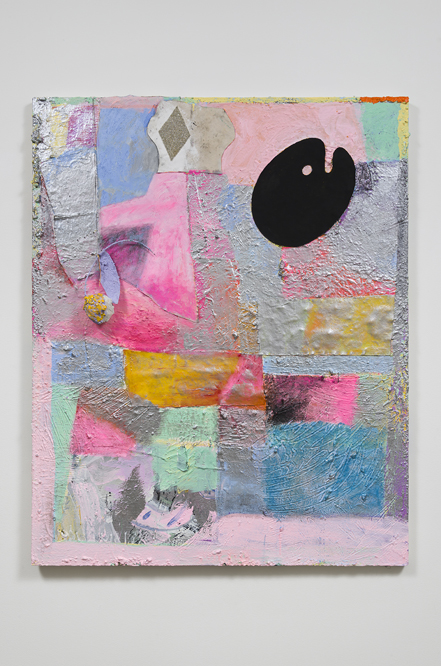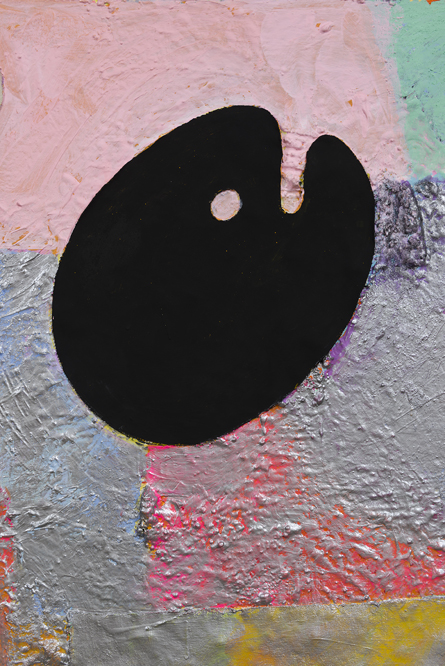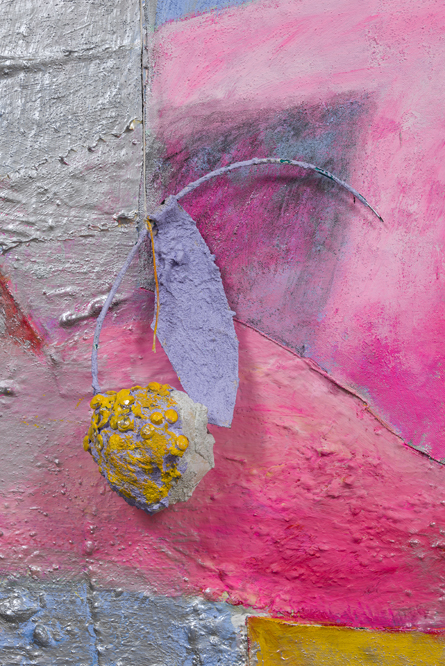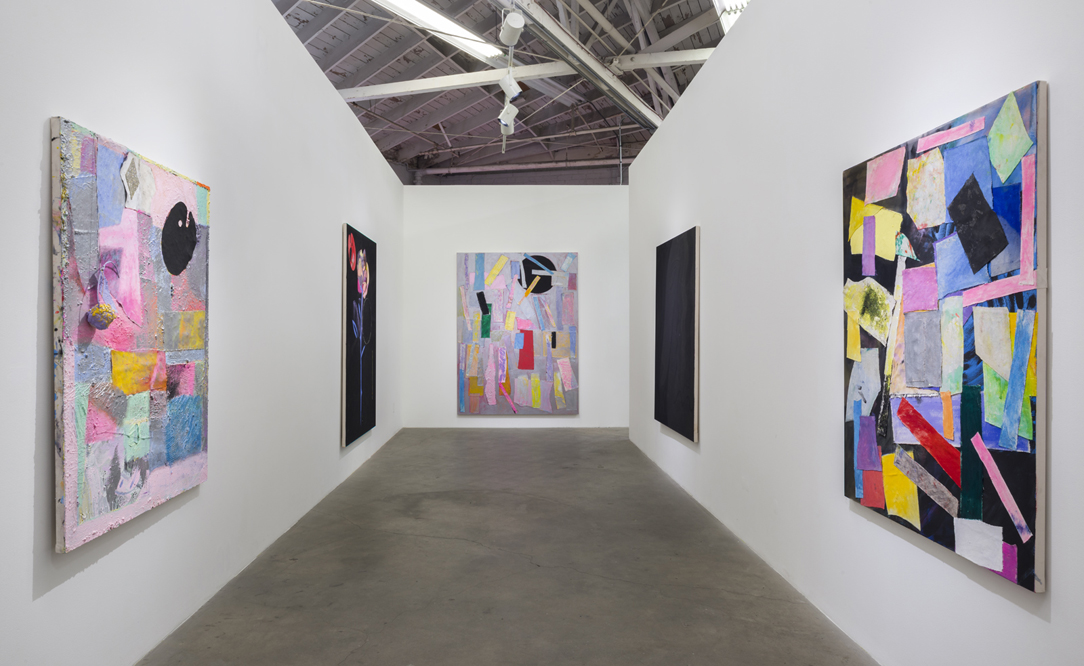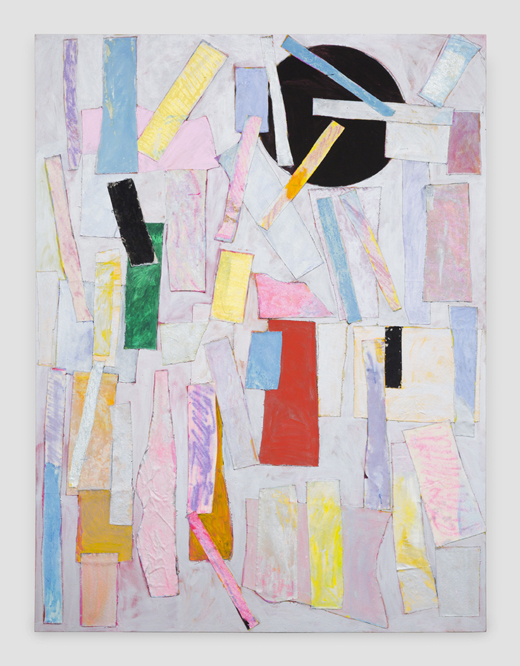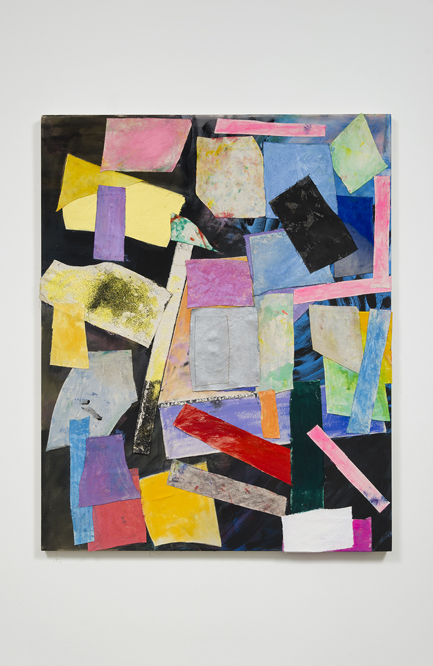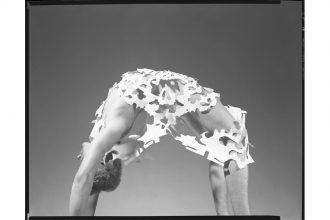The looping ladies and lipsticked cigarettes of Sojourner Truth Parsons’s past pictures give way here to a litter of pups amidst polychromatic explosions sopping with glitter. Rose petals peel back and the haunting silhouette of red and black palettes (literal ones) hint at a painter finding a new shimmer in her voice. The show’s title, Crying in California, comes from a black-on-black monochrome of the swooped profile of a dog. But a couple pictures over is another pup with stardust teardrops (Bullet Proof Soul, all works 2016), surrounded by a maelstrom of colorful canvas cut-outs, that makes the title more obvious. A midnight butterfly looks to alight on top of that puppy’s nose, but one isn’t sure if its wings bring a delicate blessing or a darkling curse. And though these aren’t the first dogs to appear in Parson’s paintings as regal silhouettes, their central presence here hints that they’re psychic familiars and beloved companions – emotional revealing, heart-struck and hopeful.
In Bullet Proof Soul, the figuration and patchwork abstraction throughout the exhibition come swirling together in breathy pinks, tender purples, and harvest gold. They flutter around this tearful creature.
Amidst these spare figures and flurrying colors, a darkness creeps from the gravitas of that black-on-black monochrome to other paintings. Two smirking dogs (their respective furs flaxen and cream), with scrappy pink tongues wagging, emerge from a black tableau in the hilariously-titled Every Shit You Take. A noir painter’s palette hangs like a sinister spaceship over a collage of color in August !. And in Rose the eponymous flower floats high in a dark field, subtly stroked into existence with ethereal hues, whilst a new moon floats beside it within portentous shadow. In Sunset !, the subdued hues of rectangular cuts of canvas float in the blackness of a coming night. Hardly the standard representational sunset of its title, you can almost imagine Parsons cutting all the shifting colors from a long twilight and scattering them into fifth-dimensional shards to make this Technicolor dreamcoat.
A question of where we’ve been and where we’re going undulates throughout Parson’s contours and cuts. It’s not the hanging, precisely, but the subjects and methods of the exhibition that hint at some narrative, an unfolding process, one which begins or ends in those paintings composed of layered canvas scraps. At their most raw, they make for a kind of rare abstraction from an artist who normally deals with the curves of bodies and motifs of things. Perhaps not an abstraction, but rather these layered shreds are purely what they are, a painter finding in the destruction of other canvases a rebirth in their combination. But whether these patchworks start the series or close it remains mysterious to me. August ! solidly hints at the strongest cleaving with the widest and brightest range of colors. A mermaid’s blue mane, an elegant dowager’s pink face powder, and an orange peeled out of a California sundown, all of these are smeary with a silver that shifts and reflects with the cold glow of the gallery’s fluorescent lamps.
Parsons’s paintings are emotive and everyday, but full of possibility and premonition, hidden meanings drawn from nature or intuition. You feel one woman trying to find her own piece of mind while channeling a divine feminine. Parsons summons an atmosphere where the boundary between the internal world of emotions and spirit and the external world of things dissolves, capturing a state of being that reveals the illusion that they were ever separate.
All of it comes together in a scent.
And alongside acrylic and raw pigment, Flashe and glitter, Parson lists amongst her painting materials “lavender essence.” The sweet washer of old sins and their memories, lavender perfume leaves in its soft embrace the possibilities of forgetting, the striking of what came before, and the grace of the unknown that comes after. A purgative and cleanser, lavender is a forgiving smell.
Awash in all this, are the tears in Crying in California of sorrow or joy?
Both, probably.

